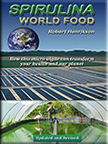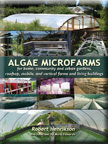REFERENCES AND ABSTRACTS BY HEALTH CATEGORY
Spirulina scientific reference library. Over 100 references covering 45 years of international research.
Click on PDF Download button for free pdf file.
Many public health problems are caused by infectious agents like microbial organisms including virus, bacteria and fungi, life style and environmental factors. The most dreadful diseases like tuberculosis, diabetes, many viral infections, heart diseases and cancer are causing human deaths worldwide. Cancer is a complex, multistep process and multi-factorial in origin. Cancer causing agents called carcinogens transform a normal cell to tumor or cancerous cell. Life style, food habits, job factors, environmental factors and hereditary mutations plays major role in carcinogenesis.
Persons working in cement factory, welding works, wood works are more susceptible to transformation and development of tumor. Biological microorganisms such as bacteria and viral infections also contribute nearly 19% of cancers. Chemical drugs used in the treatment or cancer therapy are leading to side effects. Therefore, there is a need to develop safe, effective and novel drugs. Research findings of earlier studies indicate that the Spirulina platensis exhibits clinical significance especially anticancer activity.
Evaluation of chemoprevention of oral cancer with spirulina.
by Babu, M. et al. 1995. Pub. in Nutrition and Cancer, Vol. 24, No. 2, 197-202. India.
The blue-green microalgae spirulina, used in daily diets of natives in Africa and America, has been found to be a rich natural source of proteins, carotenoids and other micronutrients. Experimental studies in animal models have demonstrated an inhibitory effect of spirulina algae on oral carcinogenesis. Studies among preschool children in India have demonstrated spirulina fusiformis to be a effective source of dietary vitamin A. We evaluated the chemoproventative activity of spirulina (1 g/day for 12 months) in reversing oral leukoplakia in pan tobacco chewers in Kerala, India. Complete regression of lesions was observed in 20 of 44 (45%) evaluable subjects supplemented with spirulina, as opposed to 3 of 43 (7%) in the placebo arm. When stratified by type of leukoplakia, the response was more pronounced in homogeneous lesions: complete regression was seen in 16 of 28 (57%) subjects with homogeneous leukoplakia, 2 of 8 with erythroplakia, 2 of 4 with verrucous leukoplakia, and 0 of 4 with ulcerated and nodular lesions. Within one year of discontinuing supplements, 9 of 20 (45%) complete responders with spirulina developed recurrent lesions. Supplementation with spirulina did not increase serum concentrations of retinal or beta carotene, nor was it associated with toxicity. This is the first human study evaluating the chemopreventive potential of spirulina. More studies in different settings and different populations are needed for further evaluations.
Inhibitive effect and mechanism of polysaccharide of spirulina on transplanted tumor cells in mice.
by Lisheng, et al. 1991. Pub. in Marine Sciences, Qingdao, N.5. pp 33-38. China.
Polysaccharide of spirulina can inhibit the proliferation of ascitic heptoma cells of mice in the concentration of 200 mg/kg. It can inhibit the incorporation of H-thymidine, H-uridine and H-leucine into DNA, RNA and protein synthesis of sarcoma 180 and ascitic heptoma cells during the period of 24 hours after exposure in vitro. The degree of inhibition increases with the extending of incubation time. Polysaccharide of spirulina can inhibit DNA synthesis of sarcoma 180 and ascitic heptoma cells. The mechanism of inhibition belongs to DNA metabolism disturbance.
Enhancement of endonuclease activity and repair DNA synthesis by polysaccharide of spirulina.
by Qishen, P. et al. 1988. Pub. in Chinese Genetics Journal 15 (5) 374-381. China.
The influence of water soluble polysaccharide from spirulina platensis on excision repair of DNA was investigated by means of endonuclease assay and radioautography. The results showed that the presence of the polysaccharide enhanced significantly both the repair activity of radiation damaged DNA excision and the unscheduled DNA synthesis (UDS). During the examination of the time course of the excision process, it was found that the presence of polysaccharide of spirulina not only increased the initial rates of the damaged DNA excision and the UDS, but also postponed the saturations of both important reactions of excision and repair DNA synthesis.
Inhibition of experimental oral carcinogenesis by topical beta carotene.
by Schwartz, et al. 1986. Harvard School of Dental Medicine. Pub. in Carcinogenesis, May 1986 7(5) 711-715. USA.
Beta carotene was found to significantly inhibit the formation of squamous cell carcinoma of hamster buccal pouch when a solution was applied topically three times weekly for 22 weeks in an experiment with 40 hamsters. In a second experiment with 80 hamsters, beta carotene was found to inhibit oral carcinogenesis in an initiation-promotion hamster buccal pouch system. Beta carotene in hibited both initation and promotion.
Prevention of experimental oral cancer by extracts of spirulina-dunaliella algae.
by J. Schwartz, G. Shklar, et al. 1988. Harvard School of Dental Medicine. Pub. in Nutrition and Cancer 11, 127-134. 1988. USA.
An extract of Spirulina-Dunaliella algae was shown to prevent tumor development in hamster buccal pouch when a solution was applied topically three times weekly for 28 weeks. Untreated control animals all presented gross tumours of the right buccal pouch. Animals fed canthaxanthin presented a notably and statistically significant reduction in tumour number and size compared with controls. Animals fed beta carotene demonstrated a smaller but statistically significant reduction in tumor number and size. The algae animals presented a complete absence of gross tumors. However, microscopic sections of the buccal pouch in the algae group showed localized areas of dysplasia and early carcinoma-in-situ undergoing destruction.




